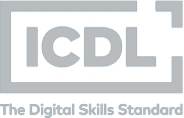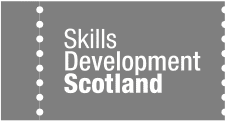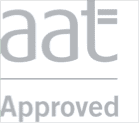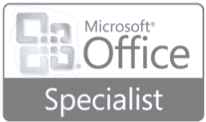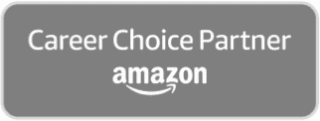

In today’s fast-paced working world who wouldn’t want to be able to put their foot on the accelerator pedal to hit top speed to help us get through the mountain of tasks that have come our way.
Technology undoubtedly helps us be efficient and responsive but I believe it’s equally important to retain a range of more traditional skills that can enhance our working lives.
I am often inspired by motivational quotes (and in that I know I am not alone!) and one I have enjoyed seeing stuck on my wall recently is from Warren Gamaliel Bennis, an American scholar, organisational consultant and author, widely regarded as a pioneer of the contemporary field of Leadership studies, who said “Success in management requires learning as fast as the world is changing” – and I’d argue this doesn’t actually just relate to management but anyone interested in progressing their career.
The idea of learning fast could however send shivers down your spine, if you’re anything like me and like to make considered, thorough approaches to any new knowledge acquired. Surely that’s half the fun right, taking time to digest and drink in new information to make our knowledge bank more robust?
On the other hand, I can totally see his point. When the world is changing so rapidly often there’s no time for the more drawn out approach. We often need to learn on the job, and quickly. Then, alas, in this ongoing hamster wheel we’re always chasing our tail to find the next big ‘hack’ to help us improve productivity – a new app, a new system, some IT wizardry – surely this is the way to give us the edge?
But is it? I’ve gotten to thinking, we could do a lot worse than going back to basics and honing a few traditional skills that have stood the test of time, and are going nowhere fast.
Let’s start with shorthand
These days, alongside the more traditional shorthand systems such as Teeline which can take you to 80wpm, there are other takes on shorthand. Systems such as BakerWrite™ SpeedWriting, which uses the basic principles of vowels, phonetics and prefixes to adapt your current writing style can take you up to a speed of 40wpm.
For more than 2,000 years people have used shorthand to make note-taking quicker and more reliable. It’s a skill that has survived being banned by a Roman Emperor and associations with witchcraft! But, could technology be its demise?

There’s no doubt technology fulfils our ‘need for speed’ and makes admin tasks much easier. Technology has made some gigantic leaps over the past few decades and it’s now an intrinsic part of our everyday life. I can understand why many would say that it’s easier and more familiar to tap little buttons on a screen or laptop than to put pen to paper and adopt the old-fashioned method of shorthand. However, there are areas where technology can have its downfalls; batteries can run out, systems can freeze or crash, your laptop decides to update and restart itself (usually at the most inconvenient time!). Any slight pause in recording or disruption to your devices could mean an important loss of information that can’t be retrieved.
According to Mary Sorene, secretary of the British Institute of Verbatim Reporters, it’s still three times quicker to type out shorthand notes than to listen back to audio recordings. Even through the technological advancements we have seen, we have to remember one thing: the skilled shorthand writer has logic, a high command of English, and lots of common sense. This, coupled with a notepad and pen, can create a very efficient way of working.
You can see why we still stress the importance of this age old skill. Sir Isaac Pitman famously said ‘time saved is life gained’ and it’s fair to say that he left a significant legacy.
Lately, many recruiters have seen an increase in the demand for this skill and some universities and training programmes put it as a requirement in their modules for students to learn and use.
At Pitman we have seen an increasing trend of whole teams taking our courses in shorthand or speedwriting – so they could all understand each other’s notes, saving hours of precious time
I can honestly say I am vowing to make more of an effort with these skills and I’d encourage those who have never experienced shorthand or speedwriting it to give it a try. Returning to my inspiration quotes another I value is from Jackie Stewart who said: “It’s not always possible to be the best but it is always possible to improve your own performance.”
If you do decide to have a go, here are a few starting points:

Quick Shorthand Tips:
- Practice makes perfect – make practice interesting by writing shorthand to your favourite TV programmes or music.
- Use numbers where possible – 8 can replace words with ‘ate’ or 4 – ‘for’
- Sometimes you may already use word replacements – that’s fine too (old habits die hard)
- Don’t worry if it’s spelt wrong – as long as you know what you mean, that’s the whole point!
Another area to consider hitting the fast forward button on is reading.
I often have lengthy documents to read through and it can be quite an onerous job. Think about the time spent reading industry news or white papers or reviewing the latest company newsletters etc. it all adds up. If only we could trigger a photographic memory and store all the information directly into our brains – but alas not yet!
There are lots of different techniques and many of us already skim read probably without realising it but in recent years apps such as Spritz and Spreeder have launched with the aim of helping you digest large amounts of content faster than you would normally.
Here are some tips I’ve come across that could help you start speed reading:-
- What is the content you’re about to read? Speed reading isn’t appropriate for every written document. If you need to truly comprehended and assess the information within the document, speed reading probably isn’t appropriate for this occasion.
- Before you start, think about the purpose of you reading the document, what is it you want to know or gain from it? This way you are more alert to digesting useful info and will naturally skim other content of no importance to you.
- If there is a summary, read it. If there is a contents page scan it – so you know the flow of the information and know where your focus needs to be.
- Skim the pages, a few seconds per page – don’t waste time reading every word (unless you’re proof-reading of course!). Look for key words that seem significant, or have been highlighted in some way to direct you to them.
- Get ahead of yourself – your brain can do this! Read 3-4 words at a time but also look ahead to the next line and move your eyes across the copy, scanning the page rather than getting hung up on every word. Try to move your eyes at a pace that encourage speed reading to help you along.
- Use a pointer – to help keep your flow across the page, use a pen or your finger to guide you across each line. This can help direct your focus to specific words or phrases and will help avoid your focus jumping around the page.
- Try not to speak the words out loud as you’re going along, some readers also silently mouth the words as if they’re imagining saying the words. This can be a barrier to increasing your speed.
- Know when you need to take a break. This can be quite intense so if it all becomes a blur grab a cuppa and take five minutes.
- Make use of online apps such as those mentioned above. There are plenty of tutorials to help you master the art of speed reading so you can practice before you start to apply the technique to ‘live’ content.
- Finally, and most importantly, it’s all very well speed reading to get through the document as quickly as possible but if you’re not actually retaining or digesting the information within the text, there’s little point. This is where the old ‘more haste, less speed’ saying comes into play. You don’t want to get to the end of a long report and realise you don’t actually remember the key points. You’ll only end up having to start all over again!
As with anything, practice makes perfect. I know I have acquired some of these skills but I can still improve. I am trying to implement these techniques into my day-to-day activities though so hope to make an impact that way!
Good luck in your quest, if you, like me, felt a need for speed, I think it could be quite fun!
This article first appeared in Executive Secretary Magazine, a global training publication and must read for any administrative professional. You can get a 30% discount when you subscribe through us. Visit the website at www.executivesecretary.com to find out more or to get your 30% discount email [email protected] and tell them we sent you.




